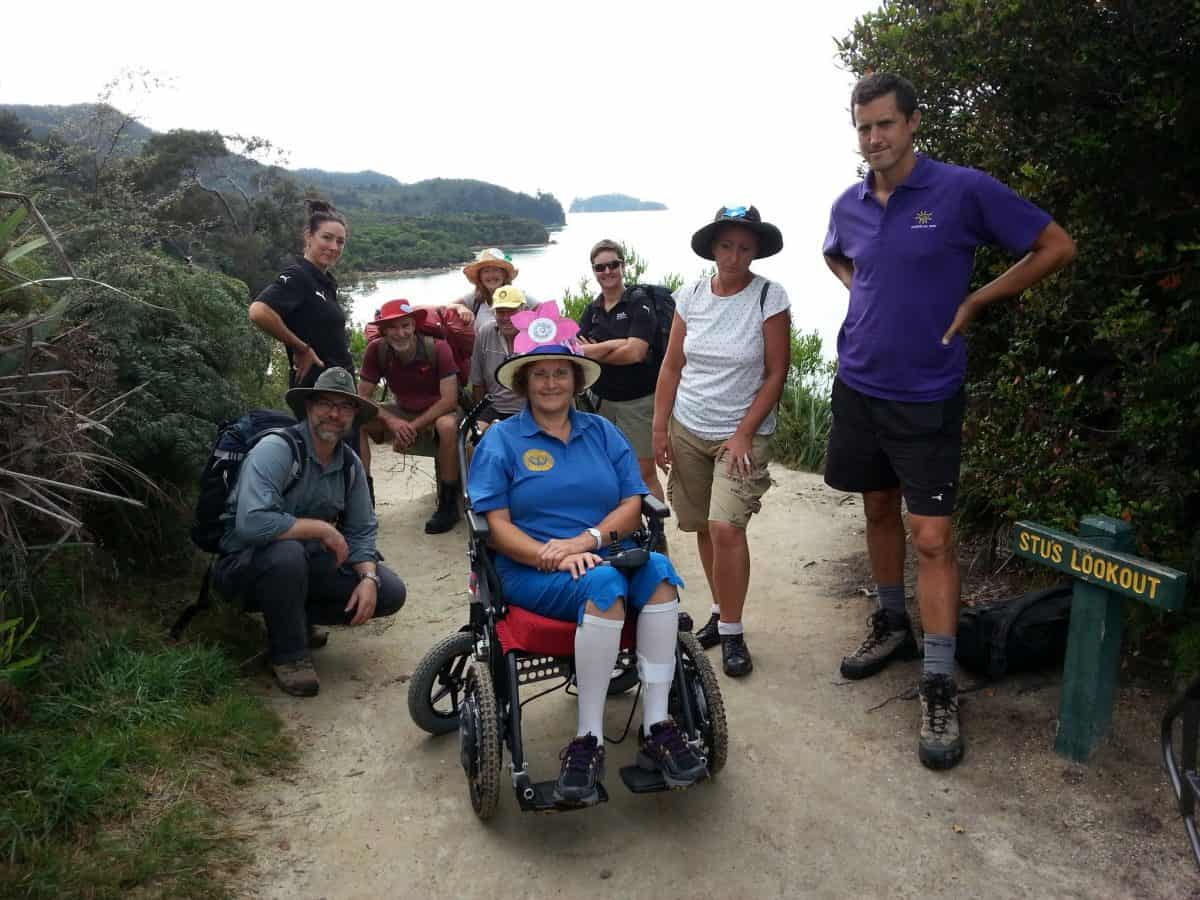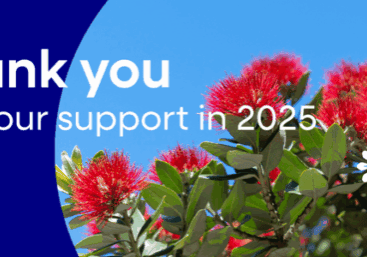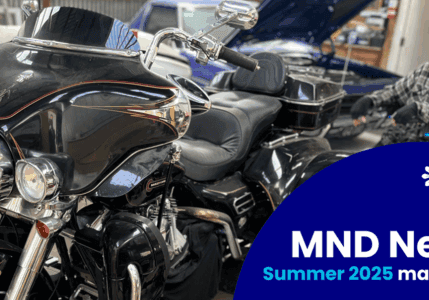Getting into nature with MND
Living with MND
2 October 2018

Holidays can be an essential way to recharge your batteries, particularly in times of stress or illness. Getting away from your normal environment and routines can really lift flagging spirits. It is possible to travel and have holidays with MND, with a bit of extra research and preparation.
Being outside in New Zealand’s beautiful natural environment is good for everyone. Spending time in nature is associated with lower blood pressure, lower rates of depression, and better mood. It’s ideal for someone coping with the stress of a life-limiting condition such as MND – but the limited mobility that comes with MND can make accessing nature difficult.
When Merle Bradley was diagnosed with MND in 2014, she was determined to keep enjoying the outdoors – and she wanted to make it easier for others with MND to do the same. In March 2016, Merle volunteered to help the Department of Conservation and the Halberg Disability Sport Foundation undertake a wheelchair accessibility trial on the Abel Tasman Coast Track. The trial lasted three days and Merle and her family and friends covered 30km, testing three different off-road wheelchairs.
The trial gave the Department of Conservation (DOC) a greater understanding of the requirements of people who have limited mobility, and DOC has since changed its website so people can filter tracks that may be suitable for a wheelchair user (there are 50).
Halberg Disability Sport Foundation, Be Accessible and DOC are developing Accessibel, a new app and website that contains accessibility information about New Zealand tracks, waterways and cycle ways.
DOC says that people with disabilities, with support, are known to have reached Mt Everest Base Camp and the summit of Mt Kilamanjaro, which inspires them to continue to work to make New Zealand’s great outdoors increasingly accessible.
Merle’s inspiration, enthusiasm and passion during the accessibility trial created lasting memories for the DOC and Halberg staff involved. Merle’s contribution now drives their joint work to have more New Zealanders accessing our beautiful country.
Merle also worked with New Zealand inventor and engineer Peter Thompson to test and promote his ViMo wheelchair, designed for rough and uneven surfaces. She advocated for the Hokitika Lions and Rotary clubs to buy two ViMo chairs for the Hokitika i-Site, to be hired out to people wanting to explore the West Coast's accessible tracks.
Following her Abel Tasman Coast Track trial, Hokitika-based Merle completed most of the West Coast Wilderness Trail, the Mananui track, the Hokitika Gorge and sections of the Punakaiki Pancake Rocks. “I had been a fairly regular tramper, heading out about twice a year. I thought my tramping days were over, but the trial has given me confidence that I was able to get out on tracks,” she said.
“I hope the West Coast will become a destination for people who want to have a great time and enjoy the benefits of being in the outdoors. I want as many people as possible to come to Hokitika and hire a ViMo wheelchair for $20 per day and enjoy the many accessible tracks Hokitika has to offer.”
Sadly, Merle Bradly died due to MND in July 2018. We are very grateful for her work helping people with limited mobility enjoy New Zealand’s outdoors


